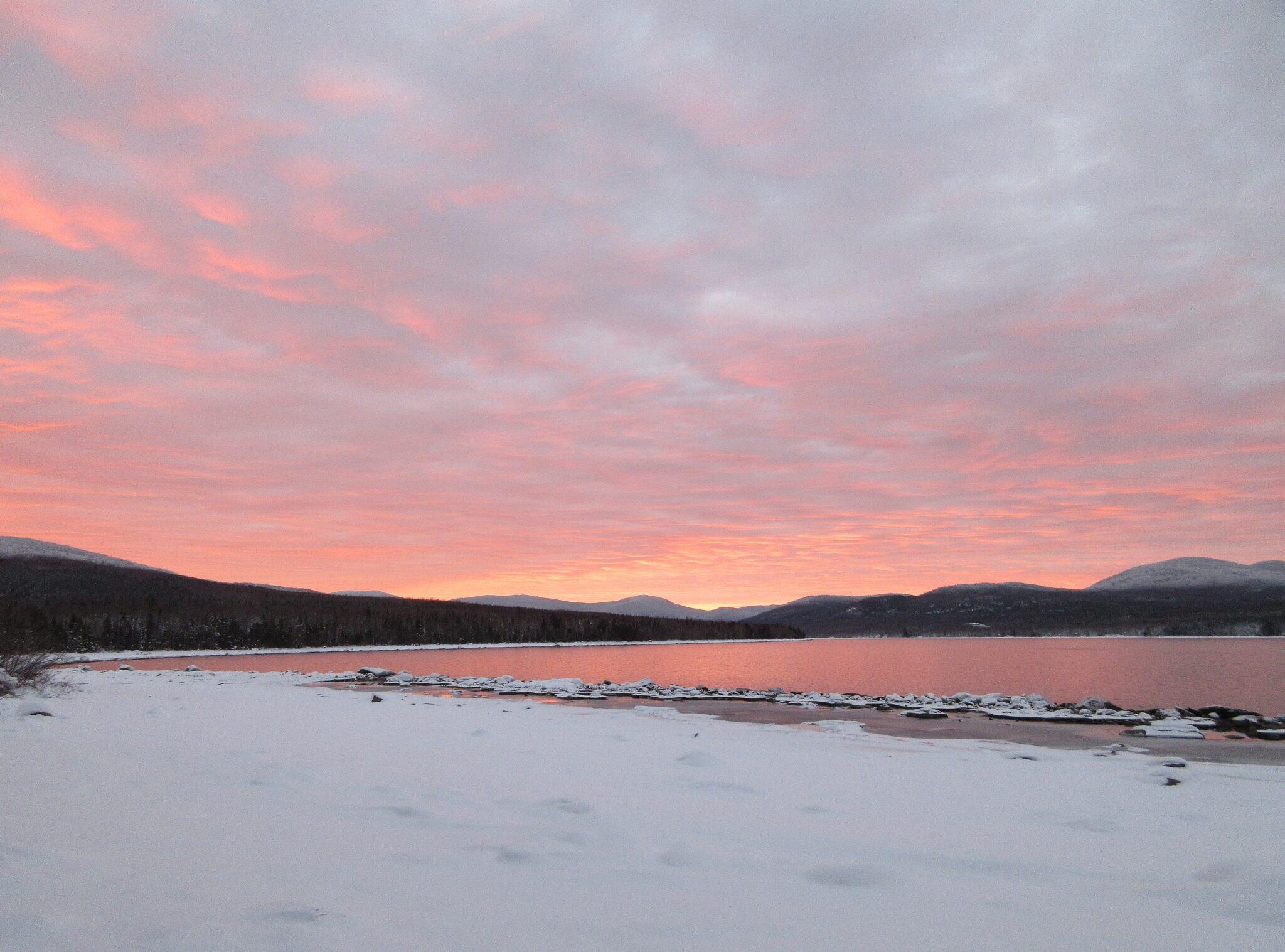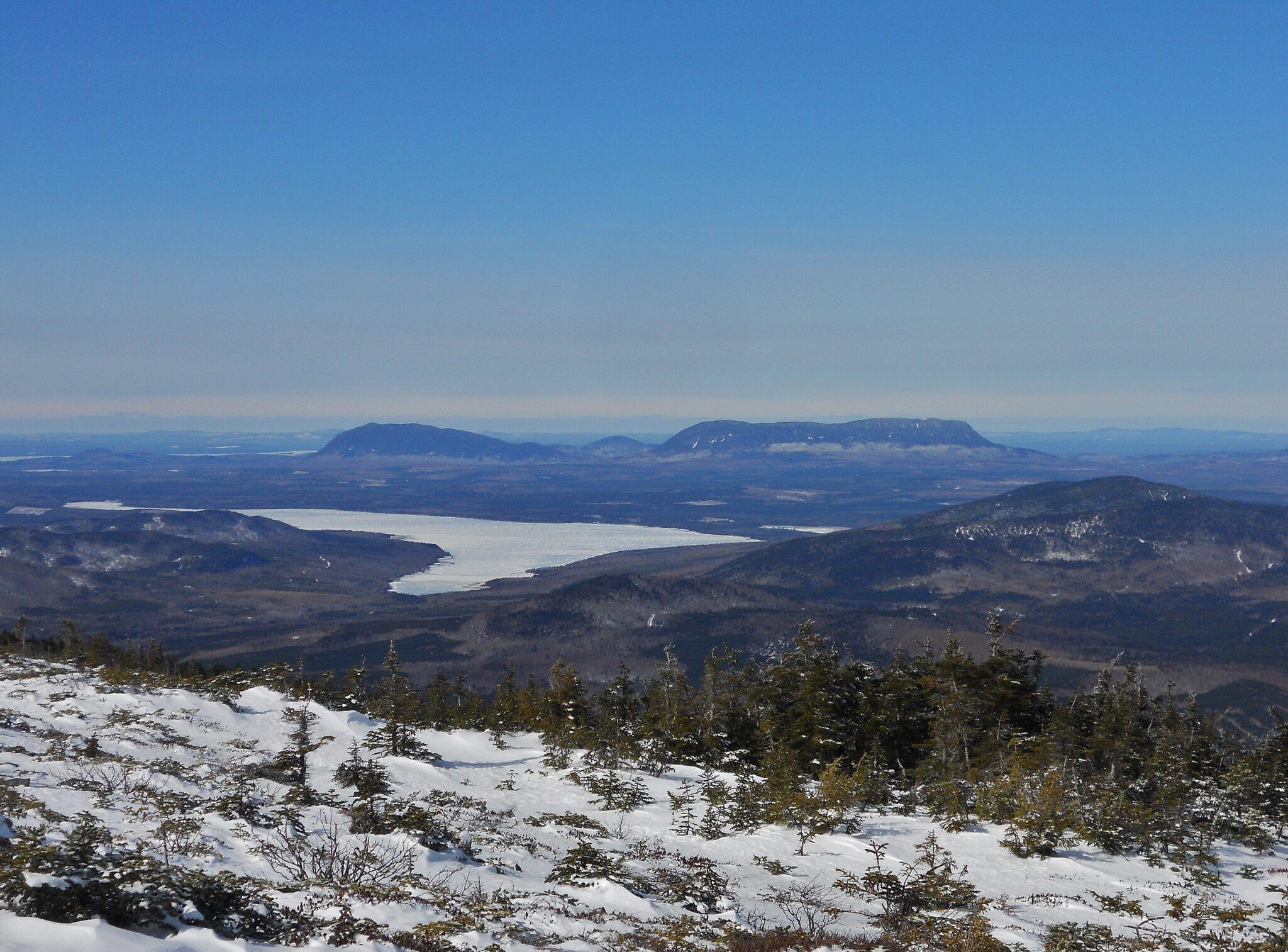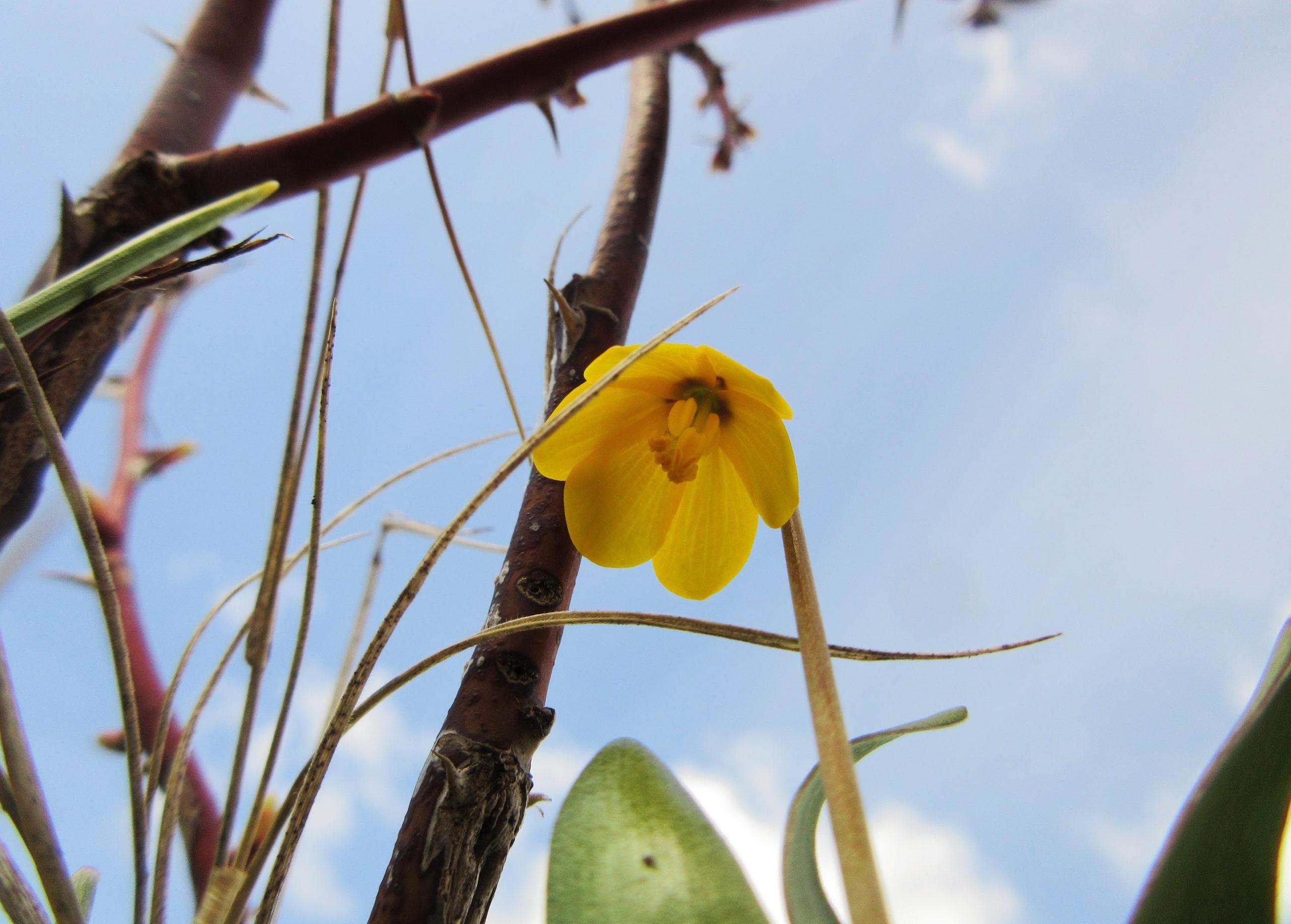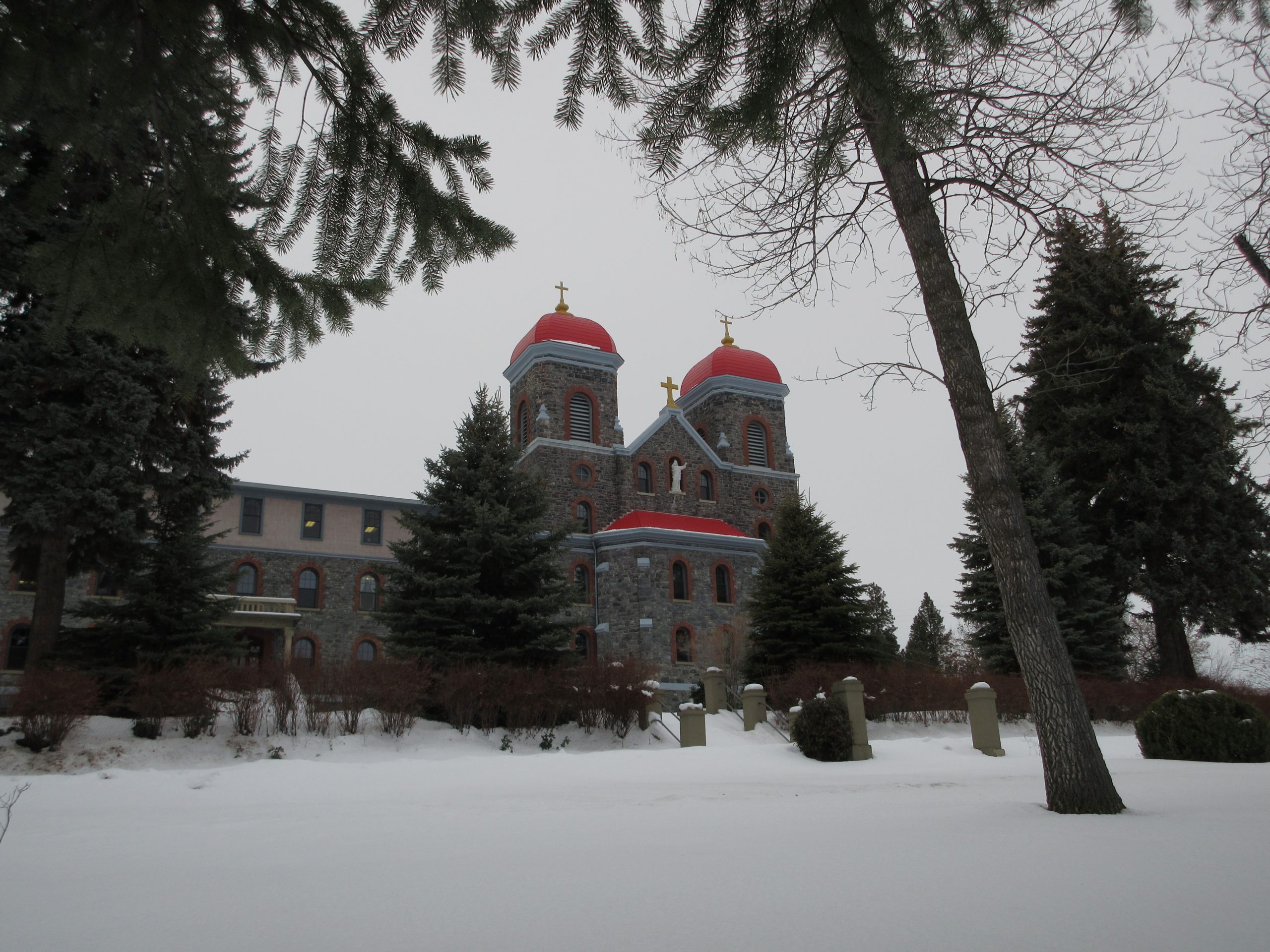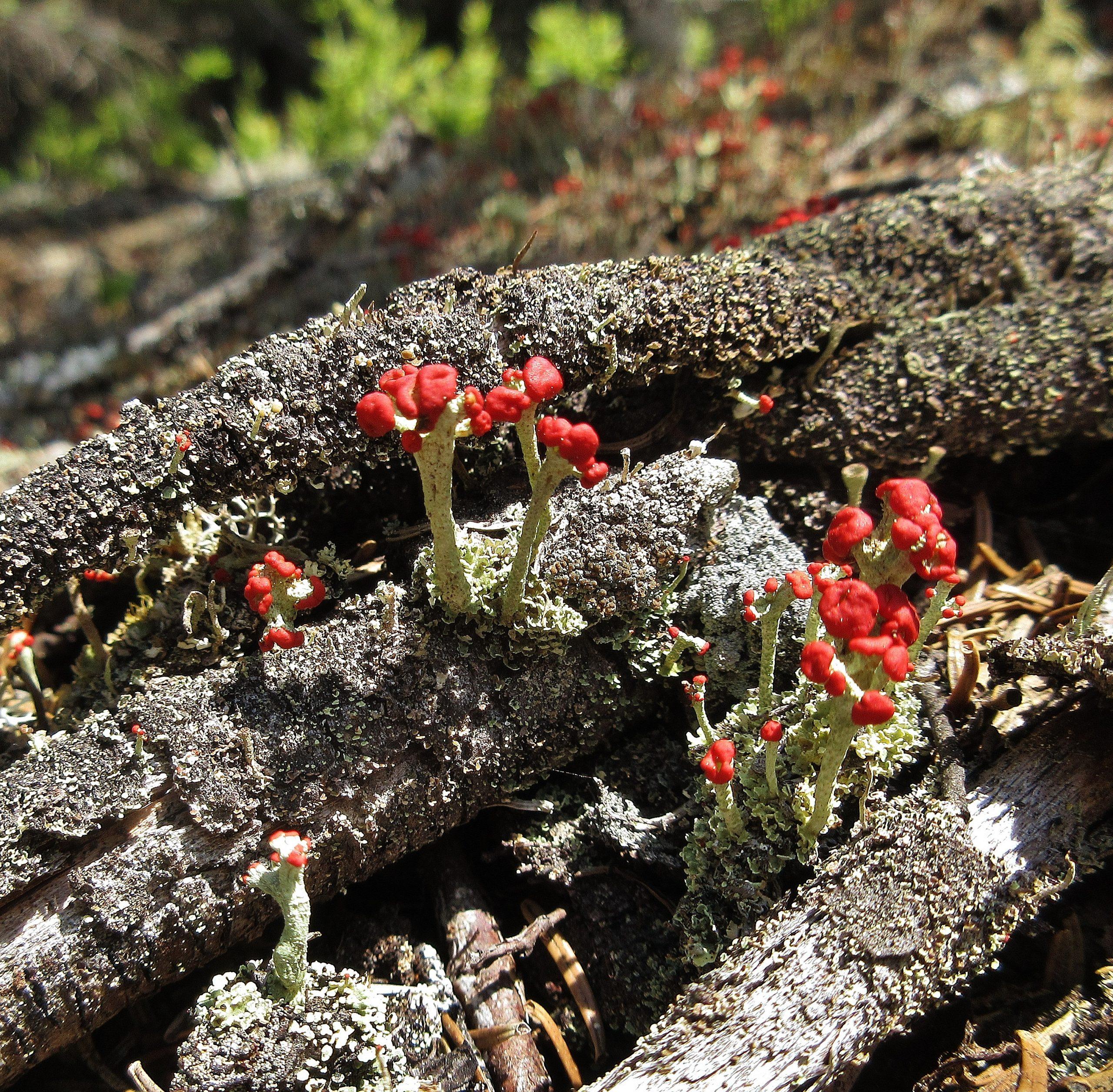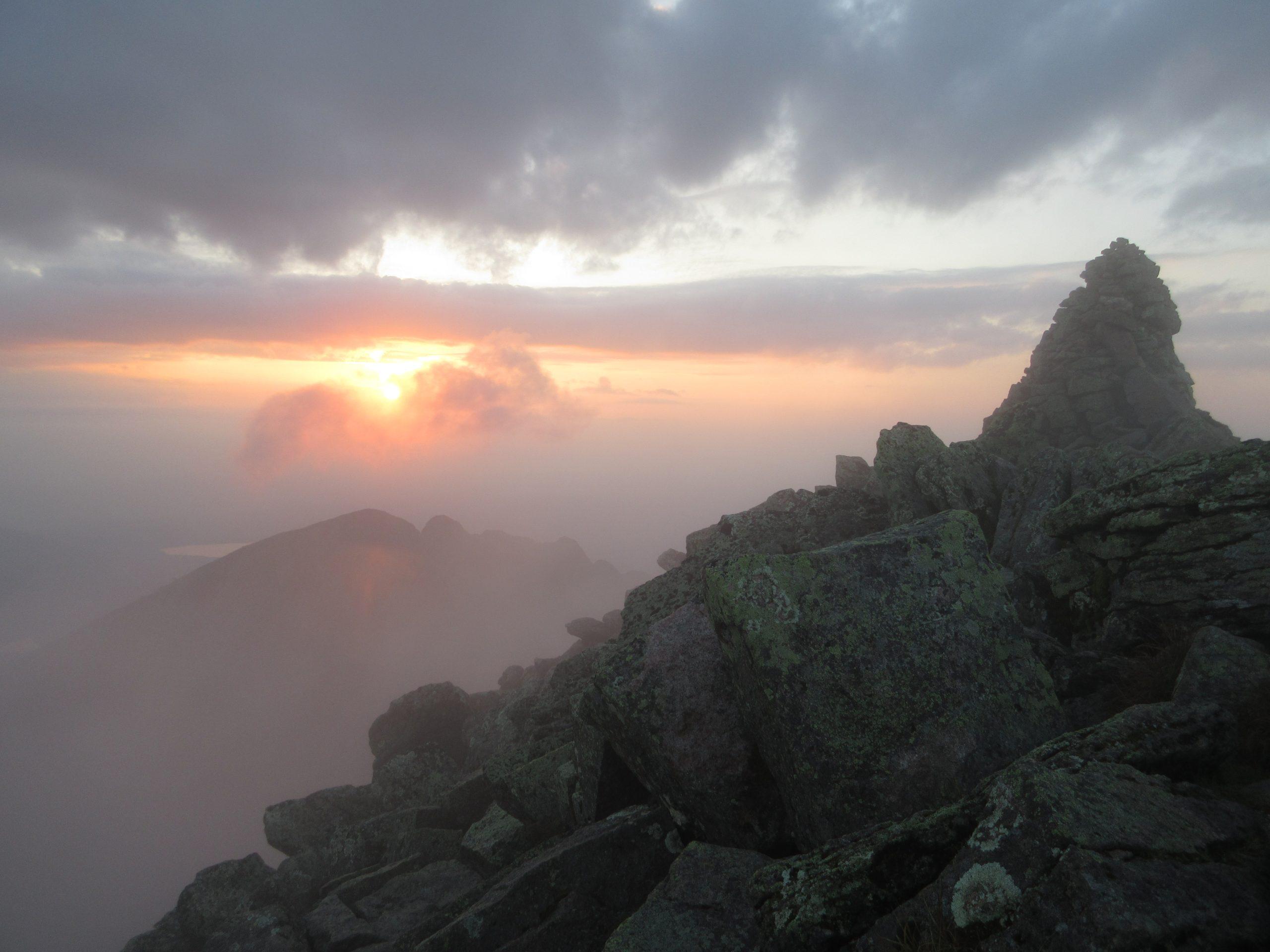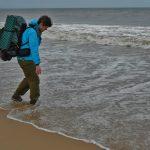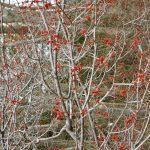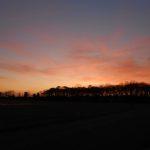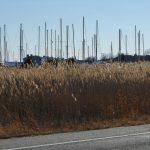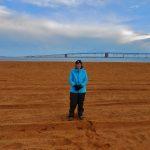As my long-term blog friends know, I spent the winters of 2021 and 2022 in my off-the-grid cabin on First Roach Pond, deep in the Maine Woods. This winter, I’m living mostly on the grid. I’m seeking a publisher for my book manuscript Heaven Beneath Our Feet, and I’ve signed on as a substitute teacher in the Greenville school. This week is February vacation, and I took advantage of the opportunity to return home.
To reach my cabin, I traveled across First Roach’s frozen surface on snowshoes, gear sled in tow. My guide was the Leaning Birch: a prominent tree along my shore that I can see from the boat launch where I began my trek, two and a third miles away. (For more about the Leaning Birch, see my earlier blog post at wendyweiger.com/leaning-birch.)
How did this wild, remote place become my home? Nearly two years ago, at the end of my first full winter in my cabin, the editor of Senior Hiker magazine invited me to write a contemplative essay answering this question. As often happens, my initial draft offered some details omitted from the published version. I would like to share the full story with you now.
The sounds I describe in the opening paragraph are the voices of May. Of course, nature’s music changes with the seasons. This week, I’ve heard the yelping call and resounding drum of the pileated woodpecker, the guttural croaking of the raven, the sighing of wind through the trees. The ice on the pond has made a sound I would describe as something between a boom and a gurgle. And as the temperature has dropped lower, the snow has found its voice: the pressure of my boots evokes soft, dry squeaks.
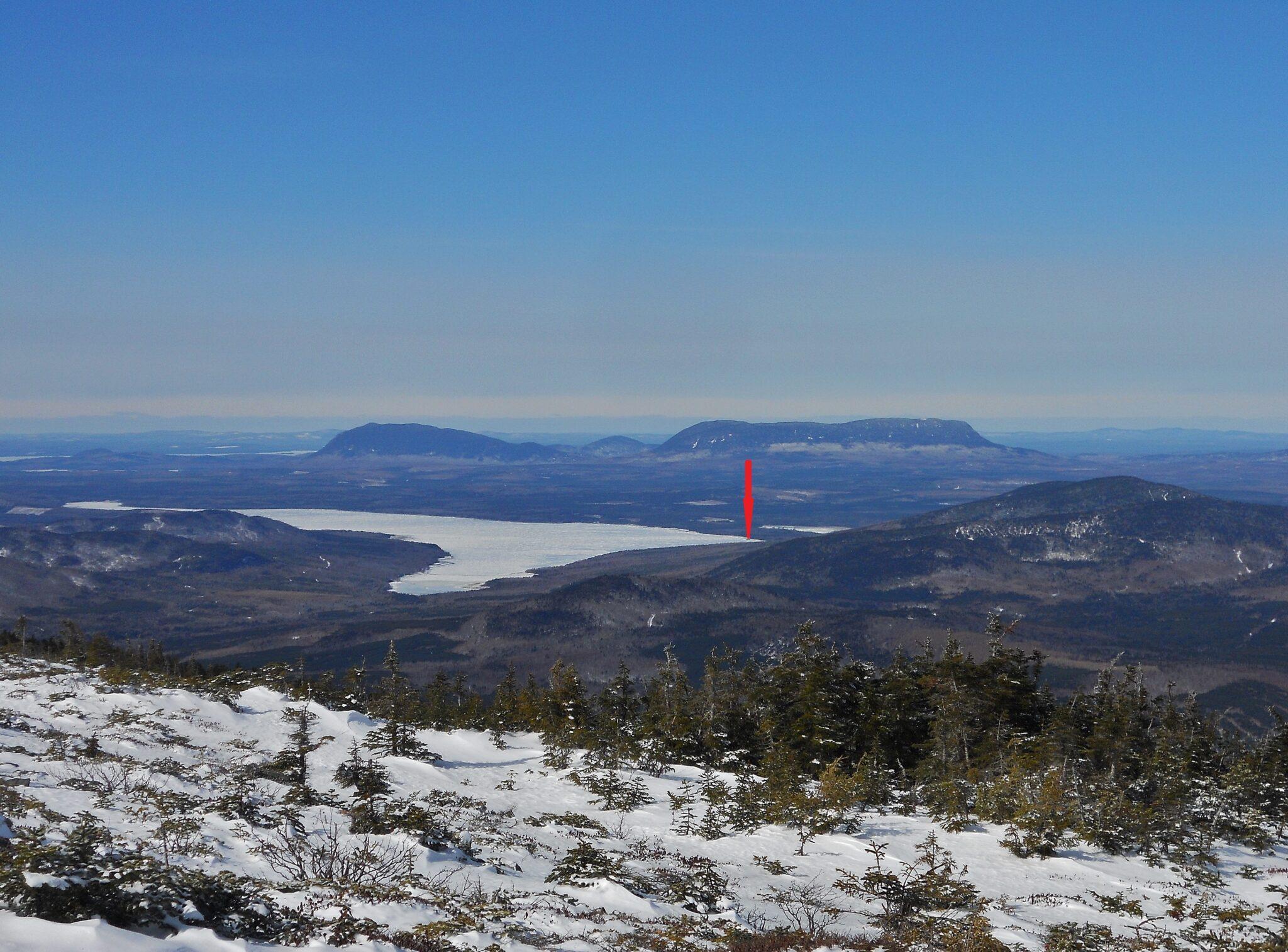
Homecoming
I’m sitting in my little cabin in the Maine Woods, in the soft glow of propane lamps, on a spring night. Outside, under a waxing half-moon, my avian and amphibian neighbors are getting down to the urgent business of procreation. The ghostly wail of loons drifts over the surface of the pond, interrupted by more strident yodeling and laughter as the birds sort out breeding territories. A whooping chorus rings out from a nearby wetland as male peepers advertise their eagerness to mate. In just a few hours, when the eastern sky lightens, the sweet plaintive voice of the white-throated sparrow will proclaim the new day. These sounds fill me with contentment. They are the sounds of my chosen home.
I think of an ancestor, my grandmother with a few thousand “greats” interposed. She lived in Africa two hundred thousand years ago. She was your grandmother too. All humans alive today share a common grandmother, if we look back far enough.
She and her family had strong roots in the land where they lived. Their bodies came from the soil on which they walked, and returned to that same soil when they died. From birth to death, they were fully embedded in their local ecosystem. They were integral members of an interconnected web of creatures, some of whom they hunted, and some of whom hunted them. They understood their natural surroundings intimately. Without that understanding, they would not have survived. Their relationship with their home was profound and all-encompassing.
Our grandmother’s descendants eventually left that primordial home, spreading across the face of the Earth. The first humans arrived in what is now called Maine about twelve thousand years ago. The ancestors of today’s Wabanaki discovered treeless tundra exposed by retreating glaciers. Even now, Wabanaki stories, passed down orally through the millennia, preserve memories of a time when mammoths roamed. Descendants of those first settlers adapted to new lifeways as forests grew and spread. Their culture evolved in concert with the land, and, over thousands of years, their identity was shaped by interaction with its woods and waters.
In comparison with our ancient grandmother, or with the Wabanaki to whom my land belonged, I grew up homeless – though no one in our contemporary society would have applied that word to me. I lived in urban and suburban housing that was more than adequate to meet my physical needs. The surrounding terrain had been tamed in accordance with modern aesthetic standards. Monoculture lawns replaced native plants. Humans and domestic pets crowded out wildlife.
For many Americans, I’m guessing that what constitutes “home” has little to do with land, in contrast with our ancient forebears. I suspect that home is defined as a dwelling where we live with a partner and possibly children; or a house that was shared with parents and siblings in childhood, where we return for holidays.
When I reached my mid-thirties, I came to the daunting realization that, as I aged, there would be no such home for me. My biological family had dwindled to my dearly-beloved mother and two first cousins, both of whom were considerably older than I and who were, unfortunately, in poor health. I had dated men, but never found one with whom to share my life.
I was an urban academic, living in the Boston area, working in medical research at Harvard. During times of personal challenge, I invariably found my greatest solace in nature. When I struggled to find my way through inner darkness – the trauma of my father’s violent suicide, the grief of losing my favorite aunt to ovarian cancer – the wooded trails of a suburban park were my salvation. They offered tantalizing glimpses of a world that had not been homogenized by humans, where I could live as part of a larger community of life.
I longed to leave the city behind and move to a place where I could grow into deeper relationship with nature: a place to which I could commit myself, a place that would feel like home when all my family were gone. To my joy, my mother understood my need, and wanted to accompany me on my journey.
We had no real roots anywhere. My mother spent her childhood in Michigan’s Upper Peninsula. Her grandparents were drawn to the region by jobs in iron and copper mines. Her family never developed a sense of connection with the land. For recreation, her few remaining relatives would choose shopping at Walmart over a hike in the woods.
But the woods were there, and they were rich and beautiful. When Mother and I returned for visits, the two of us would head off on our own to explore old-growth forests, tumbling waterfalls, and the shores of Superior, the largest of the Great Lakes. Their wildness spoke peace to my spirit.
I had developed a network of personal and professional ties in Boston, which I hoped to maintain. What about the forests of northern New England, we wondered? On the suggestion of a friend, we drove five hours north from Boston to Moosehead Lake, the southern gateway to the Maine Woods – and we were hooked.
The Maine Woods are the largest undeveloped forest east of the Mississippi: nighttime satellite photos show the region as a black island of darkness that stands in sharp contrast to the white froth of human lights all around. Millions of acres of rugged tree-clad mountains, wind-whipped lakes, and whitewater rivers are populated by lynx and moose, boreal birds and brook trout. This is a place where cell phones don’t work and relying on your GPS navigation system will get you lost.
A few weeks after my forty-second birthday, Mother and I made our move. We bought a house in Greenville, a town of about sixteen hundred people at the southern tip of Moosehead Lake. We also found twelve acres of woodland for sale on the shore of First Roach Pond, just east of Moosehead. The land lies about ten miles from the midpoint of the most remote section of the Appalachian Trail, known as the Hundred Mile Wilderness. After several years of summer tent camping there, we built a small off-the-grid cabin – a traditional Maine “camp” – with natural amenities that, in our view, more than compensated for the lack of electricity and running water.
When I arrived in Maine, my ancient grandmother would have deemed me woefully ignorant, despite my supposedly world-class education. I had much remedial learning ahead. I plunged into my outdoor training with the same intensity I had previously applied to my academic studies. I headed out to experience the Maine Woods in all seasons, under my own power: in hiking boots, by canoe, on snowshoes and skis. I took advantage of every opportunity to wander the forest with experts in birding, tracking, botany, and foraging. Wherever I went, my aim was (and still is) to practice mindfulness: to open my heart, mind, and senses to my surroundings; to give myself over to the sights, sounds, smells, and sensations flowing in from all directions; to be fully awake, in each moment, to the woods and waters around me.
I set myself two goals. I wanted to know the source of every sound in the woods: the voice of every bird, frog, and mammal. And I wanted to know the terrain well enough that, if all maps and all roads suddenly vanished, I could confidently navigate the woods on my own.
I’ve journeyed thousands of miles up mountains and down rivers in pursuit of these goals. I’m at peace with the fact that my life will be too short to realize them. What’s important to me is that I keep learning.
Each year, as I trek through the cycle of the seasons, my understanding grows, and I’m able to engage more fully with the natural rhythms of the land. I look forward to annual milestones with eager anticipation: the return of the red-winged blackbirds in early spring; the blooming of round-leaved orchids in my woods in mid-summer; the ripening of wild cranberries on the cusp of autumn; the thickening of ice that allows me to “walk on water” in winter. Each year, these rhythms become more a part of who I am.
The most meaningful connections are two-way: we receive, but we also give back. My bond with the Maine Woods has grown stronger through my participation in grassroots advocacy. A year after my move north, a real estate investment trust announced sprawling development plans for the Moosehead region. The proposal included housing, commercial, and industrial construction that posed serious threats to the health of the region’s woods, waters, and wildlife.
I joined a small band of concerned local citizens to form the Moosehead Region Futures Committee. Over the next few years, Moosehead Futures became the focus of my life as I coordinated our group’s intervention in a technical hearing process conducted by Maine’s Land Use Regulation Commission. My understanding of the ecology of the Maine Woods deepened as I worked with people who had spent decades of their lives struggling to protect them: experts in conservation law, forestry, fisheries, and wildlife. And, though we didn’t get everything we requested, the efforts of Moosehead Futures and several allied organizations contributed to significant improvements to the original plan. Nearly 400,000 acres of forest were placed under permanent easements that will protect them from future residential or resort development.
By investing myself – my time and skills – for the ecological benefit of the Moosehead region, I moved beyond the role of appreciative observer. I became an active participant in the Maine Woods’ community of life.
When we moved to Maine, my mother was seventy-eight years old. Still healthy and vigorous, she joined me on moderate hikes and flatwater canoe trips. Though we had always been close, our adventures bound us even closer. We reveled in the joy of shared discovery. We supported each other through inevitable moments of adversity caused by unexpected wind or rain. We spent long evenings, free from distraction, in conversation by our campfire.
But as Mother aged into her mid-eighties, her body grew frail. Her hiking and paddling days came to an end. Our land grew more precious to us, as a safe refuge where we could still be together in the wild.
Ten years after our move, Mother passed away. At her request, I scattered her ashes at a spot on our shore from which we watched many a sunset. A tree grows at that spot, a tall birch that leans out over the water. It means a lot to me to know that Mother’s ashes have nourished the growth of the tree. In winter, the birch serves as a landmark when I snowshoe across the ice of First Roach Pond to my cabin, and I like to think that Mother’s spirit is reaching out to guide me. In spring, when the tree unfurls new leaves, I see Mother’s body transformed.
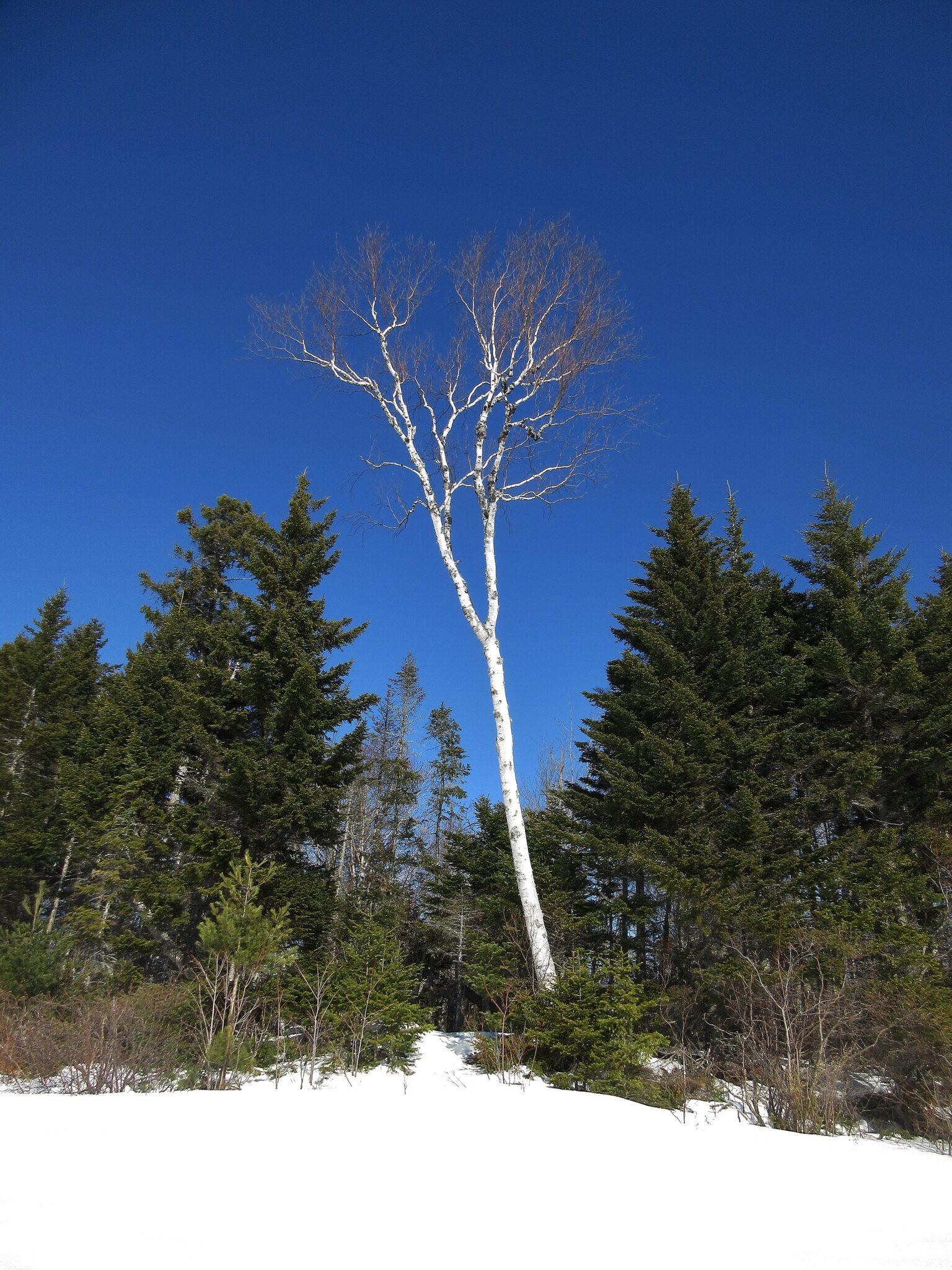
Several years after Mother died, I realized I could not afford to keep both the house in town and our land in the woods. I needed to choose one or the other. My decision was surprisingly easy. I had made good friends in town, but they would remain my friends no matter where I lived. My home is in the woods: not just my own land, but the millions of acres of forest of which my land is a part. The Maine Woods have become inextricably entwined with my identity and my spirit.
This past winter, seventeen years after my move to Maine, was the first I’ve spent entirely at my cabin. There is no winter road access, and I don’t own a snowmobile. I snowshoed from my car to my cabin, supply-laden sled in tow. Depending on where I parked, the distance ranged from two and a third to four and a half miles. I’m several miles from my nearest year-round neighbor, and I went weeks at a stretch without seeing another human. Yet I never felt alone. I counted trees as my friends, and the birds and other creatures as my neighbors.
Are the Maine Woods the only place where I could have found a home? As much as I love them, the answer is no. I believe that through mindful immersion, I would have learned to love almost any natural setting. In a desert or a tropical rainforest, on a savanna or Arctic tundra, if I opened my eyes and my heart, I would have found wonders aplenty to nourish my spirit.
In fact, my love for my chosen home moves me to care more deeply for wild places everywhere. Mining the riches of the Maine Woods has helped me to understand that, anywhere in nature, the more deeply I look, the more marvels I will find. And with that understanding, all the Earth feels like home.
